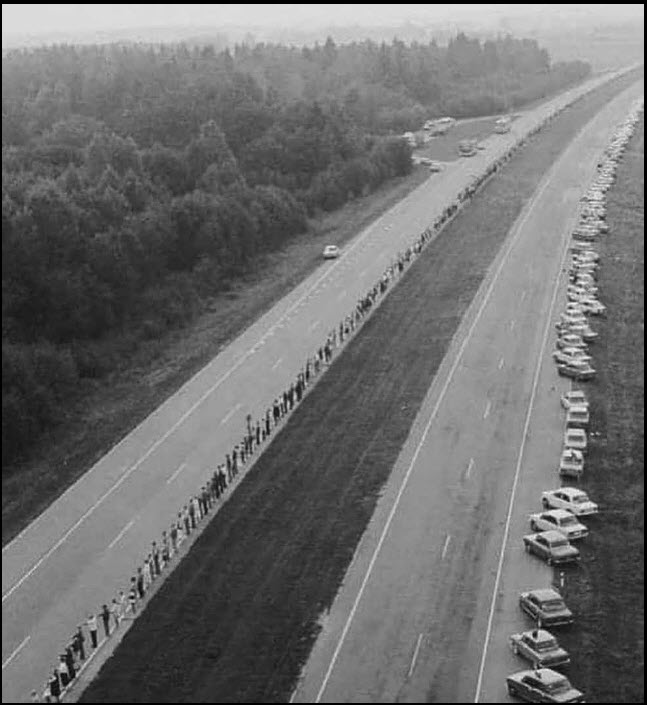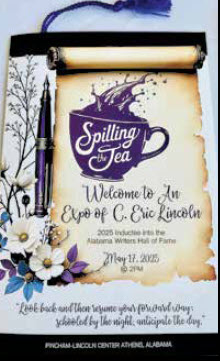By: Mae Lewis
Estonia is a tiny, culturally rich country on the Baltic Sea. They have one of the most extensive collections of folk music in the world — celebrated with choral festivals and choirs all over the country. Choral music is central to Estonian culture…so imagine what happened when they weren’t allowed to sing!
In the aftermath of World War I, Estonia became independent from Russia. But then shortly afterward, they found themselves occupied by Nazi Germany during World War II, only to be swept back into the Soviet Empire as the direction of the war changed.
Under the new Soviet regime, the Estonians began to see their culture slowly wiped out. Stalin quickly began an ethnic suppression and cultural replacement. It became illegal to fly the Estonian flag or to express any hint of nationalism. Their music was forbidden. No choirs, no festivals, no patriotic songs. Their language was no longer taught in the schools, and only Russian was allowed to be spoken. Estonians were being shipped out, and Russians were being shipped in. By the early 1980s, Russians had replaced 40% of the Estonian population.
In the 1950s, some Estonians fought back using guerrilla tactics, but they were quickly suppressed by the Soviets. The Estonians did not know what to do. They couldn’t stand up to the great armies of the Soviet Union! Their culture was slowly being erased, but they were determined to maintain their cultural identity. They had no weapons, but they created their own power, remarkably, by banding together and singing.
With the restructuring that took place when Gorbachev took power in 1985, the Estonians finally had a chance to let their voices be heard. They began engaging in mass demonstrations, gathering in town squares, and defiantly singing the traditional patriotic songs of Estonia which had been forbidden for years. These demonstrations became the cornerstone of the resistance.
The movement began to gain strength, and even though there was great division in the nationalist movement, the Estonians were committed to holding onto their culture.
There were three very different Nationalist movements in Estonia: The conservatives, the radicals, and the middle. They each had a different idea for how the demonstrations should go, which led to conflict. The cautious leaders feared Soviet confrontation, and those in the middle tried to work with the Communist party. Those who were more brazen saw working with the communists as a betrayal – but ultimately, they all recognized the futility of trying to challenge the Soviet Union. The three groups agreed that above all, the demonstrations had to be nonviolent. Their unity — and their cultural survival — was more important than their individual ideologies. They agreed to cooperate with one another for the demonstrations and by 1988, festivals were happening every month with thousands of people in traditional dress, singing the songs of their culture, and filling their hearts with hope and unity.
As their national and cultural identity was revived, the festivals grew, and in September of 1988, a massive song festival in the capital of Tallinn attracted 300,000 people – a third of the entire population! Many people were dressed in traditional Estonian dress that had been passed down for generations. The power of this moment was undeniable, and politicians – of both Estonia and the Soviet Union — began to openly call for the country’s independence.
By the fall of 1988, a petition was signed by 860,000 Estonians disavowing the Soviet Union and declaring themselves citizens of the Republic of Estonia.
A year later, the neighboring countries of Latvia and Lithuania joined their cause, and over 2 million people gathered in a show of solidarity, forming a human “Baltic Chain” that ran the length of all three countries — 400 miles of hands linked together and voices singing.
Many feared a bloodbath, but the Estonians kept singing. When Moscow tried a show of strength and sent tanks into the capital, the Estonians surrounded the radio and television stations, forming a human shield to prevent these critical assets from being captured. They continued to sing. The following day, the Russian government formally recognized the independence of Estonia and the other Baltic States.
This “Singing Revolution” lasted for five years. In the end, it was successful: they won their freedom peacefully and nonviolently. One million Estonians stood up to 150 million Russians – a remarkable achievement!
Since then, Estonia has made great economic strides. They have joined the EU and NATO, and maintained a parliamentary democracy. Every five years, Estonians celebrate their historic revolution with a singing festival — 25,000 singers and 100,000 spectators at the Song Festival Grounds.
By: Mae Lewis









 June 20, 2025
June 20, 2025



